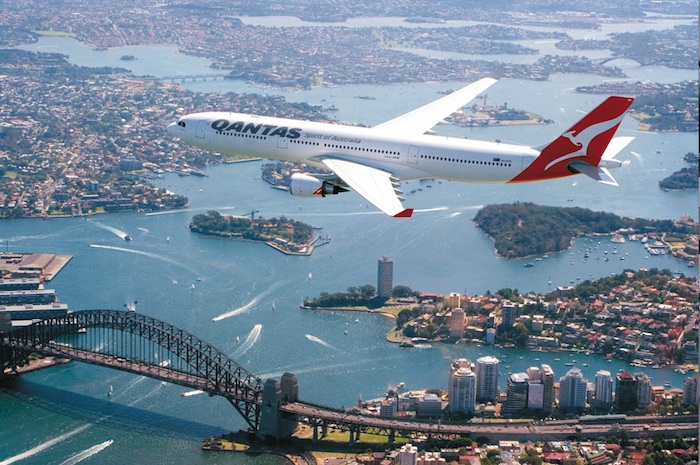As an industry, aviation is a significant CO2 emitter, and due to its technological headwind also one of the slowest to make sustainable progress, let alone renewable progress. However, the Qantas Group has furthered its commitment to sustainable aviation by setting a 2050 net-zero carbon emissions target.
Qantas, “The Flying Kangaroo”, Australia’s national carrier and one of the world’s oldest airlines, has today become the only airline group in the world to commit to cap its net emissions at 2020 levels, and the second to commit to net zero emissions by 2050.
From this day forward, Qantas is committing itself to:
- Immediately double the number of flights being offset
- Cap net emissions from 2020 onwards
- Invest $50 million over ten years to help develop a sustainable aviation fuel industry.
According to the Air Transport Action Group (ATAG), aviation is responsible for 12% of all CO2 emissions from transport sources, and 2% of CO2 emissions overall. The aviation industry itself has already committed to halving its emissions by 2050 as compared to 2005 levels, but Qantas is looking to fly ahead.
Qantas Group CEO Alan Joyce said these commitments would make Qantas a leader in the aviation industry’s efforts to reduce carbon emissions. “We recognise that airlines have a responsibility to cut emissions and combat climate change,” said Joyce. “We’ve already made some good progress, especially by investing in newer aircraft that have a much smaller carbon footprint.”
Aviation’s Technological Headwind
In the road transport sector electric vehicles (EVs) are gaining momentum rapidly, Melbourne’s trams are powered by solar and trains are already linked to the grid. Aviation, on the other hand, is nowhere near the technological advances being seen elsewhere in the transport sector. Transitioning to electric power means transport can be sourced renewably through solar or other renewables, but it is simply too complex a task to produce an electric plane of any practical use at this time.
Unlike land vehicles, aircraft cannot cope with the added weight of a rooftop solar array and battery. Dr Dries Verstraete of the University of Sydney’s UUSYD) School of Aerospace, Mechanical and Mechatronic Engineering notes that increasing the mass of a car by 35% requires 13-30% more energy use. But increasing the mass of a plane by the same proportion requires 35% more energy use as energy use is directional proportional in aircraft.
However, this is only the first whiff of the technological headwind facing aviation. Inherently, the sheer distances aircraft cover demand more energy than land transport and cannot, for obvious reasons, utilise grid connection or charging stations. An aircraft has to carry its energy with it.
Verstraete is confident electric aviation is on the horizon, but the event horizon, especially in terms of an economy of scale, is many decades away. The good news is that the main challenge facing the industry is the same challenge faced across the board of the energy transition – battery advancement.
Offsetting Flights
Due to the technological headwinds outlined, airlines must find alternative solutions to curbing their CO2 emissions and seeking as much renewable power for grounded infrastructure as possible.
Qantas’ carbon offset program sees around 10% of customers choosing to offset their flights. Qantas and Jetstar will now match every dollar spent by offsetting customers. The airline is hoping this will encourage more customers to travel in the guilt-free wonderland of carbon neutrality.
“Qantas already offsets all of its own travel needs and so do many of our customers,” noted Joyce. “By matching their efforts, we’re hoping it will encourage even more people to offset and the program will keep growing.”
Sustainable Aviation Fuel
Qantas’ investment of $50 million over the next ten years toward the development of a sustainable aviation fuel industry is probably the most significant action taken. Importantly, a sustainable alternative like biofuel, unlike hydrogen, would not require substantial alterations to existing aircraft. Any developments would be easily implementable. Biofuels have already been trialled by major airlines and has been used in commercial flying as early as 2008.
The aviation industry could reduce its emissions by 80% by finding sustainable alternatives to traditional jet fuel. However, viable alternatives are currently almost double the price, and therefore not viable at all.
“Innovation is going to be key,” stressed Joyce. “We know from our own trials that the technology (sustainable aviation fuel) works but we need to get to a scale of production where it’s a practical substitute.”
This content is protected by copyright and may not be reused. If you want to cooperate with us and would like to reuse some of our content, please contact: editors@pv-magazine.com.









2 comments
By submitting this form you agree to pv magazine using your data for the purposes of publishing your comment.
Your personal data will only be disclosed or otherwise transmitted to third parties for the purposes of spam filtering or if this is necessary for technical maintenance of the website. Any other transfer to third parties will not take place unless this is justified on the basis of applicable data protection regulations or if pv magazine is legally obliged to do so.
You may revoke this consent at any time with effect for the future, in which case your personal data will be deleted immediately. Otherwise, your data will be deleted if pv magazine has processed your request or the purpose of data storage is fulfilled.
Further information on data privacy can be found in our Data Protection Policy.